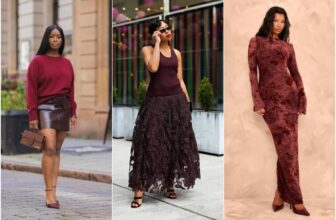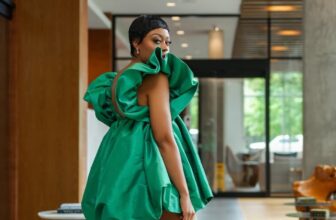Congo Brazzaville has not historically been associated with leading global fashion trends. However, there has been a growing acknowledgment of its influence in high fashion circles in recent years. This recognition is attributed to a distinctive group of Congolese men known as the “Dandies of Congo,” who give a refreshing perspective on the country, diverging from its prevalent narrative of conflict and hardship.
These individuals, also referred to as “Sapeurs,” uphold a subculture deeply rooted in haute couture. Despite being surrounded by stark poverty, they consistently present themselves in impeccable attire, adorned with the most prestigious designer labels, coordinated colors, and an array of accessories that include hats, bow ties, pocket squares, and canes.
The “La Sape” movement is all about the “cult of style,” where dressing to impress is key. For the Sapeurs – who are almost always men – it’s not about what’s in vogue, it’s about style. The labels they covet most are those that evoke classic elegance. And, an investigation into this bold, dapper dress trend links it to 18th- and 19th-century dandyism in Europe.
History of the “Dandies of Congo”
The term “sapeur” comes from the French abbreviation ‘SAPE,’ which stands for ‘Société des Ambianceurs et des Personnes Élégantes’ and a formal representation for the “dandies of Congo.”
Sapeurs have a distinctive style that includes fancy suits, silk ties, bowler hats, and sometimes even monocles. They draw inspiration from the sophisticated fashion of 1920s French salons. Unlike many fashion trends that are expensive and exclusive, Dandyism or Sapeurism is embraced by hard-working middle-class men; they happily save up their money to buy these luxurious outfits.
The history of the Dandies of Congo goes back to the colonial era when France and Belgium colonized large parts of Africa near the Congo River basin. These colonizers often looked down on Indigenous Africans as inferior. The colonial masters would usually pay them in second-hand clothes. To push back against this, young African men in the 1920s rejected the second-hand clothes they were given and instead exaggerated and personalized the style of their colonial rulers, turning it into something uniquely their own, especially on Sundays.
The rise of the Congolese Dandies is not merely a sartorial phenomenon but a cultural movement with deep-rooted symbolism. Through their fashion choices, the Dandies challenge stereotypes, redefine masculinity, and assert their individuality in a society often marked by rigid gender roles and societal expectations. Their attire becomes a form of artistic expression, reflecting personal narratives, aspirations, and social commentary.
 Photo: Instragram.com/tariqzaidiphoto
Photo: Instragram.com/tariqzaidiphoto They treat fashion almost like a religion, giving it a sacred place in their lives. Pride is a big part of who they are, and you’ll often see them strutting confidently through the streets of Brazzaville and Kinshasa, looking like living pieces of art. Their deep love for fashion shapes their identities and gives them the courage to express themselves boldly through their clothes, sending a strong message in a world full of challenges.
The trend of Sapeurism began to gain popularity in the 1920s and 1930s among Congolese people living in Paris. One of the early influencers was André Matswa, who not only embraced the style but also stood against colonialism. However, the real surge in Sapeurism happened after Congo gained independence in 1960. Many ordinary Congolese individuals would travel to Paris and return home wearing the latest fashionable attire, igniting a widespread interest in dressing stylishly.
By the 1970s, Sapeurism had become even more prominent, thanks in part to the efforts of Papa Wemba, a famous musician from the Democratic Republic of the Congo. He founded the “Société des Ambianceurs et Persons Élégants,” or SAPE, which many modern Sapeurs proudly identify with. This marked a significant moment in the evolution and promotion of the Sapeur culture.
Today, sapeurism has been exported from its birthplace along the Congo River to other African countries and there are ex-patriot sapeur communities in Paris, London, and other European capitals.
 Photo: Instragram.com/tariqzaidiphoto
Photo: Instragram.com/tariqzaidiphoto Living the “Dandies of Congo” Lifestyle
Being a Sapeur or the Congo dandies is about more than just fashion; it’s a way of life that promotes unity and peace. This subculture has its own rules and values, explored by photographer Daniele Tamagni in his book “Gentlemen of Bacongo” and depicted in diverse documentaries out there.
Some of the rules of the “dandies” include;
- Socks should always be a specific height.
- Limit the outfit to a maximum of three colors.
- Attention to detail is crucial.
- Keep the cufflink of a suit jacket on to show it’s part of the sape’s attire.
- Impeccable hygiene and manners are a must.
- Only wear dress shoes, regardless of their cost.
- A watch is essential.
- Avoid wearing a suit or coat with a label on the sleeve.
- Sapeurs are known for being non-violent, respectful, and caring individuals. Their motto is “Drop the guns, let’s work and dress smart.”
- Sapeurs refrain from using drugs, and many are Catholic, attending church regularly.
Like any cultural movement, the Dandies face criticisms and debates. Some argue that the focus on fashion may distract from bigger social issues like poverty, while others question the affordability of their expensive clothing in economically challenged areas. There’s also debate over whether the dedication to fashion leads them to neglect other responsibilities, like providing for their families.
Despite the underlying criticisms, Sapeurism is a celebration of African resilience and the power of fashion in cultural expression, but it also prompts reflection on balancing personal passions with practical responsibilities.






